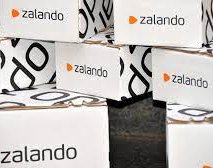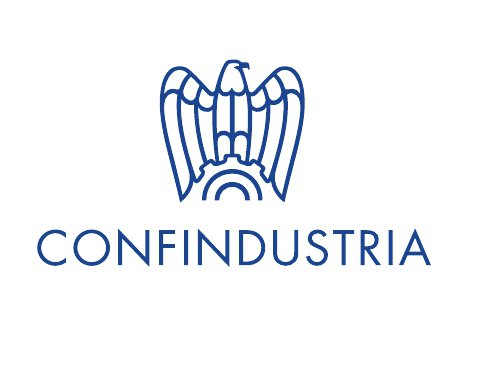Zalando expects zero growth for this year due to high inflation and declining consumer’ sentiment. This is reported by the German marketing magazine OneToOne. The profit warning of Zalando, an e-commerce platform for clothing and accessories, reads the Morning Star, is indicative of the difficult scenario that online retailers are facing while consumers reduce discretionary spending. This situation, explains the Italian ilSole24ore, drives to some reflections on how consumption and distribution change, with the revenge of the physical retail shopping
On June 24, the Berlin-based company warned that market conditions worsened in the second quarter, as it expects that growth in gross cargo volume, revenue and adjusted earnings before interest and taxes will not be below market estimates.
"Although Zalando's share price has already fallen by 64% [since the beginning of the year] in part in anticipation of such a cut, we would expect that the cut in the guidelines will weigh further on the share price," Liberum analysts said.
The stock traded 4.6% lower at EUR 24.36 in Frankfurt on Friday afternoon, after hitting a low of EUR 21.10 earlier in the day.
Fashion platform Zalando has significantly lowered its sales expectations for this year: on March 1, the company was still expecting a sales increase of 12 to 19 percent – and thus growth from 11.6 to 12.3 billion euros – the company now only expects growth of between 0 and 3 percent (or 10.4 to 10.7 billion euros). The company cites as a reason the "worsening macroeconomic conditions" , namely: reduction in the buying mood, high inflation, supply chain disruptions etc. - all effects that could also affect other market participants in the coming weeks.
To reduce costs, Zalando has already reduced its marketing investments, adjusted investments in logistics infrastructure and introduced a minimum order value in 15 other countries.
The profit warning launched by Zalando, which has had very negative effects on the stock of the Frankfurt-listed fashion e-commerce platform, may not be a wake-up call only for digital native companies and brands. Considering the sector in which the portal operates, clothing and accessories, you can broaden your gaze.
The recovery of the high-end
In 2021 and at the latest in the first part of 2022, the vast majority of mid-high and high-end brands have returned to pre-pandemic levels of turnover and profitability and in some cases have exceeded them, thanks to a balanced mix of sales channels: the strong recovery in retail has slowed the growth of online sales, but it was not a real cannibalization. Rather, from the evolution towards multi-channel, with physical and digital stores that aim to offer the same type of shopping experience, of contact with a brand and its values, its style, even before its products. So much so that Marco Palmieri, founder and president of the Piquadro group, an entrepreneur who has always been a forerunner of changes, has recently wondered if it is still worth segmenting sales by channel or if it is better to consider them as a whole, also because there is no algorithm that can explain who has chosen to buy online after visiting a store or, vice versa, which finalizes in the presence of a desire born on the web.
The revenge of the Physical retail shopping
And here lies a first link with the problems of Zalando and other platforms: despite some attempts (Jeff Bezos also tried it by opening bookstores and physical supermarkets), the business model is based almost exclusively on online sales and shipments. Many big brands took advantage of the pandemic and lockdowns to understand how digital tools could improve the physical experience, once stores reopened. It's not just about CRMs or devils, such as virtual dressing rooms or interactive touchscreens, that haven't broken through. We have moved, for example, to put the logistics built around e-commerce at the service of physical sales spaces, reducing in many cases the fixed costs of stores with department stores. A process that cannot take place in the other direction.
The cost of returns and logistics
The superfluous movement of goods has always been a big problem for fashion e-commerce: to win customers, starting from twenty years ago, when Yoox was born, we promised everyone free returns and with very long times. The result? Many, even today, buy three sizes of the same dress, to be sure they have the right one, and invariably return two. It is no longer so easy to send back at no cost and the time to do so has decreased, but logistics and transport – with all the costs for the environment that entail – remain a very high cost for platforms that promise deliveries to hundreds of countries in a few hours or days. This includes extra transport costs and warehouses in each geographical area.
Sustainability and transparency
And here we come to the most important unknown that weighs on the fashion industry, from fast fashion to luxury: sustainability. Giants such as H&M, Inditex, Mango and Ovs in Italy are multiplying efforts to reduce the impact on the environment, investing in processes and materials, but the original sin remains. The model was called fast for the speed of time-to-market and monthly if not weekly replenishment of stores, made to stimulate purchases with novelties, as well as with price. To the investigations that revealed how the model was based, also, on the absence of social sustainability (euphemism, because there are those who speak of authentic exploitation of child labor and in general of developing countries), companies - especially those listed - have reacted by increasing transparency and traceability. But it may not be enough: the new generations seem to be satisfied with fashion faster than those who preceded them, they prefer a garment that costs ten times another but lasts over time. A change that also touches luxury, where platforms and services in reselling stores flourish, to give a second life to what has stewed us, but that we do not want to throw away. It is not yet a circular model, but it could become one (it is extending from luxury to mid-range) and perhaps once again fashion will accelerate the changes in society.



